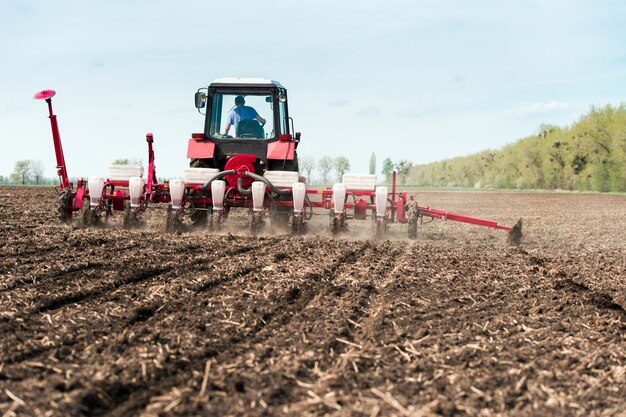Cultivating soil is an essential part of maintaining a healthy and productive garden or farm. One of the most effective tools for this task is a cultivator. Designed to break up compacted soil, remove weeds, and prepare the land for planting, cultivators offer numerous benefits, particularly when it comes to soil aeration. Here’s why using a cultivator for aerating soil is a smart choice.
1. Improved Root Growth
Healthy roots need oxygen to thrive, and compacted soil can limit this access. Cultivators help loosen the soil, allowing air to penetrate deeper. This improves root health, promotes stronger plant growth, and ensures better absorption of water and nutrients.
2. Enhanced Water Infiltration
Compacted soil often leads to water pooling on the surface, which can suffocate plants and lead to erosion. Cultivators break up hard soil layers, allowing water to seep into the ground more effectively. This ensures that moisture reaches plant roots, reducing the need for frequent watering.
3. Boosted Soil Microbial Activity
Aerated soil fosters an environment conducive to beneficial microorganisms. These microbes break down organic matter, releasing essential nutrients into the soil. By using a cultivator to aerate the soil, you create conditions that enhance microbial activity, improving soil fertility naturally.
4. Weed Control
A cultivator not only aerates the soil but also disrupts weed growth. By breaking up the soil, cultivators uproot weeds, making it harder for them to compete with your plants for resources. This reduces the need for chemical herbicides, promoting a healthier environment.
5. Better Fertilizer Integration
Fertilizers are most effective when evenly distributed throughout the soil. A cultivator mixes fertilizers with soil efficiently, ensuring nutrients are accessible to plant roots. This also prevents fertilizer runoff, saving resources and protecting nearby water sources.
6. Time and Labor Savings
Manual soil preparation can be time-consuming and physically demanding. Cultivators, particularly motorized ones, make the process faster and less labor-intensive. This is especially beneficial for larger gardens or farms where extensive soil preparation is required.
7. Reduced Soil Erosion
Compact soil often leads to surface runoff, which erodes the topsoil. Aerating the soil with a cultivator improves its structure, allowing it to retain water and resist erosion. This preserves the topsoil’s fertility and structure over time.
Choosing the Right Cultivator
When selecting a cultivator for soil aeration, consider factors like the size of your land, soil type, and specific gardening needs. Hand-held cultivators work well for small gardens, while motorized models are ideal for larger spaces. Opt for durable and ergonomically designed tools to ensure long-term efficiency and comfort.
Using a cultivator for soil aeration offers numerous benefits, from enhancing root growth to saving time and effort. By improving soil structure and fostering a healthy environment for plants, a cultivator is an invaluable tool for any gardener or farmer. Incorporate this practice into your soil management routine and experience the transformative effects on your garden or farm’s productivity.
Join 'Farmers Mag' WhatsApp Channel
Get the latest Farming news and tips delivered straight to your WhatsApp
CLICK HERE TO JOIN






